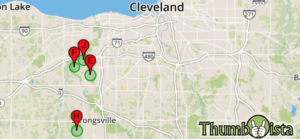Geofencing is still a new advertising technology for many marketers. The basics of this marketing buzz word is all about using location data. Smartphones use GPS to communicate location data and apps at times request that data to enhance overall user experience including ad relevance. Many DSPs offer the ability to create a virtual perimeter to request your display ads to only appear to devices within a specific “fenced” area. This is using a geofence to add location relevance to advertising.
Below is a list of our top 5 most popular geofencing questions, answered.
- How many locations can I target? As many as you want. We’ve supported campaigns for just one location, and we’ve supported campaigns that included more than 100 locations. It all depends on the goal of the campaign.

- How big (or small) can my targeting radius be? Geofences can be as precise as a specific address or as large as a zip code, or even a state. Typically, most marketers will want them to be somewhere in the middle – not too little, but not too big. If your geofence is too small, not enough people will ever enter it in order to be targeted. If the geofence is too big, then your ad won’t be relevant to most of the people in the geofenced area and therefore, your message loses relevance.
- Can I geofence any location? Generally, yes. We’ve successfully geofenced locations in all 50 states and in dozens of other countries around the world. We haven’t created any geofences in outer space, but it’s the 5-year plan. Some locations in certain states may be considered sensitive depending on the campaign content.
- Can I layer on any additional targeting? Thumbvista’s capabilities include the ability to target specific demographics within a geofence. For example, if you only want to target women within a mile radius of a home furnishings store, then your ad would only appear on sites and apps mostly used by women. Contact us for a detailed list of targeting options beyond geofencing.
- Is geofencing more or less expensive than traditional advertising? This answer surprises many people, but our technology allows us to reach a very specific audience with minimal ad waste, therefore making it a much less expensive advertising solution. Unlike TV advertising, for example, it can cost thousands of dollars to create a 30-second commercial, and thousands more to purchase the air time. Radio and print advertising, while less expensive than TV, still come with a hefty price tag and very limited targeting or reporting capabilities. And compared to general digital advertising, geofencing is not only more affordable, but engagement is typically higher because the ad is more relevant to the audience being targeted.
See more information about mobile marketing pricing using geofences
Have more questions ? Please contact us.

